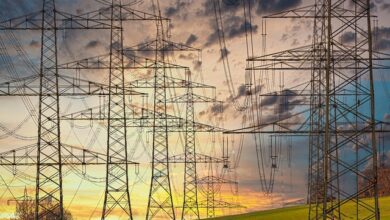AI in Journalism: Automated News Generation and Fact-Checking

As technology continues to advance at an unprecedented pace, the field of journalism is also undergoing a transformation. One significant development that has gained traction in recent years is the use of Artificial Intelligence (AI) in news generation and fact-checking. With AI algorithms becoming more sophisticated, they are revolutionizing the way news is produced and verified, allowing for faster and more accurate reporting.

Automated news generation is a groundbreaking application of AI in journalism. Gone are the days when reporters had to gather information manually, conduct interviews, and write articles from scratch. AI-powered systems can now analyze vast amounts of data from diverse sources within seconds, extracting relevant information and generating news stories in real-time. These AI-generated articles may lack human flair but provide concise and objective summaries of the latest events or financial reports.
In addition to automating news creation, AI is also playing a crucial role in fact-checking. With the rise of misinformation and fake news, ensuring the accuracy of information has become paramount. AI algorithms can quickly cross-reference statements, claims, or statistics with reputable sources and detect inconsistencies. This not only saves valuable time for journalists but also enhances the credibility of news organizations by minimizing errors and inaccuracies.
The integration of AI in journalism raises some intriguing questions. Can AI truly replace human journalists? While AI excels at automating repetitive tasks and processing large volumes of data, it still lacks the critical thinking, creativity, and context comprehension that human reporters bring to their work. Journalists possess the ability to investigate, interpret, and present stories with nuance and empathy, which are essential elements of quality journalism.
However, AI’s role as a tool in the hands of journalists is undeniable. By leveraging AI-powered tools, journalists can streamline their research process, identify patterns and trends, and uncover hidden insights buried within complex data sets. This enables journalists to focus on what they do best: crafting compelling narratives and providing insightful analysis.
Revolutionizing Journalism: How AI is Transforming News Generation and Fact-Checking
Have you ever wondered how news is created and fact-checked in today’s digital age? With advancements in artificial intelligence (AI), journalism has undergone a transformative revolution. AI technology is changing the way news is generated and verified, enhancing the speed and accuracy of information dissemination like never before.
In the realm of news generation, AI algorithms are capable of analyzing vast amounts of data from various sources in real-time. These algorithms can quickly sift through mountains of information, extracting relevant details and identifying emerging trends. As a result, journalists can access a wealth of data at their fingertips, allowing them to stay updated with the latest news developments effortlessly.
But AI’s impact on news generation goes beyond just data analysis. Natural language processing (NLP) algorithms enable AI systems to generate news articles autonomously. These systems can compose well-structured and coherent narratives, similar to those written by human journalists. By leveraging AI-powered writing assistants, journalists can save time on repetitive tasks such as summarizing reports or transcribing interviews, freeing up valuable resources for more investigative and analytical work.
Moreover, AI plays a vital role in fact-checking, ensuring the accuracy and credibility of news content. Fake news and misinformation have become rampant in our digital landscape, posing a significant challenge to journalists and readers alike. AI algorithms can swiftly cross-reference information across multiple sources, identifying inconsistencies or false claims. This automated fact-checking process helps journalists verify facts more efficiently, minimizing the risk of spreading misinformation and preserving the integrity of news reporting.
By embracing AI, news organizations can also harness the power of predictive analytics. Machine learning models can analyze audience behavior and preferences, providing insights into what news topics are most likely to resonate with readers. This enables news outlets to tailor their content to specific target audiences, improving engagement and driving traffic to their platforms.

AI is revolutionizing journalism by transforming news generation and fact-checking processes. With AI’s ability to analyze vast amounts of data, generate news articles autonomously, facilitate fact-checking, and leverage predictive analytics, journalists can enhance their work and deliver accurate, timely, and engaging news stories to the public. As AI continues to evolve, we can expect an even more significant impact on journalism, shaping the future of news delivery and consumption.
Unleashing the Power of Technology: AI’s Impact on Automated News Writing and Verification
Have you ever wondered how news articles are written and verified in today’s fast-paced digital world? The answer lies in the extraordinary capability of Artificial Intelligence (AI) to transform the landscape of journalism. With the advent of AI, automated news writing and verification have become a game-changer, revolutionizing the way we consume information.

Gone are the days when journalists had to manually gather data, analyze facts, and draft news articles. AI-powered systems now possess the ability to process vast amounts of data from multiple sources within seconds. This speed and efficiency allow news articles to be generated swiftly, providing up-to-date information to the readers.
But what about accuracy and credibility? Can AI truly replace human journalists in terms of verification? While AI cannot completely substitute for human judgment, it can significantly augment the verification process. AI algorithms can fact-check information by cross-referencing multiple sources, detecting inconsistencies, and identifying potential biases. This ensures that news articles are more reliable and trustworthy.

By harnessing the power of Natural Language Processing (NLP), AI systems can produce news articles that are coherent, engaging, and personalized. These algorithms excel at understanding the context, tone, and sentiment behind a piece of writing, enabling them to craft articles that resonate with the readers. This personalized approach enhances the overall user experience, fostering deeper engagement with the content.
Moreover, AI is not limited to solely generating news articles; it also plays a crucial role in content distribution. AI algorithms can analyze users’ preferences, behaviors, and consumption patterns, allowing news outlets to tailor content to individual interests. This targeted approach ensures that readers receive relevant news stories, increasing their satisfaction and encouraging continued readership.
As AI continues to advance, its impact on automated news writing and verification will only grow stronger. However, it is essential to strike the right balance between automation and human intervention. While AI streamlines the process and enhances efficiency, human journalists still bring invaluable skills such as investigative reporting, critical thinking, and nuanced storytelling.
The power of technology, specifically AI, has revolutionized automated news writing and verification. This transformative tool enables faster news generation, enhanced accuracy, personalized content delivery, and improved user experiences. The synergy between AI and human journalism holds tremendous potential for shaping the future of news production and consumption. So, buckle up and embrace the digital era as we witness the awe-inspiring impact of AI on the world of journalism.
From Algorithms to Articles: Exploring the Rise of AI-Generated News Stories
In this digital age, where technology is advancing at an unprecedented pace, we find ourselves witnessing a significant transformation in the way news stories are generated. Artificial Intelligence (AI) has stepped onto the stage, redefining journalism with its ability to produce automated news articles. Let’s delve into the fascinating world where algorithms meet articles and explore the rise of AI-generated news stories.
Gone are the days when journalists solely crafted news narratives from scratch. With AI algorithms taking center stage, news organizations are embracing automation to generate news content efficiently and at scale. But how does it work? AI-powered systems analyze vast amounts of data from various sources, such as press releases, government reports, and social media, to extract key facts and details. These algorithms then use natural language processing to transform the data into coherent and readable news articles.
The impact of AI-generated news stories is undeniable. Rapid dissemination of information has become possible, enabling news outlets to cover breaking stories within seconds. This immediacy allows readers to stay up-to-date on current events like never before. Moreover, AI eliminates human bias and subjective perspectives, presenting a more objective and balanced view of the news. By automating repetitive tasks, journalists can focus on investigative reporting and in-depth analysis, adding value to the stories they cover.
But what about the authenticity and credibility of AI-generated news? Valid concerns have arisen regarding the potential for misinformation and the loss of journalistic integrity. However, news organizations are implementing stringent checks and balances to ensure accuracy and maintain ethical standards. Fact-checking algorithms and human oversight play vital roles in verifying the information presented in AI-generated articles.
As AI continues to evolve, we must also consider the implications of this technological advancement. Will AI replace human journalists entirely? The answer is complex. While AI excels at data processing and content creation, it currently lacks the creativity and contextual understanding that human journalists bring to the table. The synergy between humans and machines is key, where AI can augment journalistic capabilities rather than replace them.

The rise of AI-generated news stories signifies a paradigm shift in journalism. It enables the swift dissemination of information while ensuring objectivity and efficiency. However, ethical considerations and preserving the role of human journalists remain crucial. As we embrace this era of AI-powered news, striking a balance between automation and human expertise will shape the future landscape of journalism.
Fact or Fiction? The Role of AI in Ensuring Accuracy and Integrity in Journalism
In the ever-evolving landscape of journalism, one question looms large: what is the role of artificial intelligence (AI) in ensuring accuracy and integrity? With technology advancing at an unprecedented pace, it’s no wonder that AI has become a hot topic in newsrooms worldwide. But is it fact or fiction that AI can truly uphold the core principles of journalism?
Let’s delve into this intriguing realm and explore how AI is making its mark on the world of reporting. Picture this: an AI-powered system capable of sifting through vast amounts of data with lightning speed, identifying patterns, and extracting relevant information. It’s like having an army of tireless researchers at your disposal, enabling journalists to uncover hidden connections and provide comprehensive insights.
With AI algorithms in place, fact-checking becomes more efficient than ever before. Journalists can leverage AI systems to quickly verify statements, detect potential bias, and analyze sources for credibility. This not only saves valuable time but also enhances the accuracy of news reporting. However, it’s important to remember that AI should augment human judgment rather than replace it entirely. After all, nothing can replace the critical thinking and ethical decision-making skills of a seasoned journalist.
Moreover, AI plays a vital role in combating the spread of misinformation. In today’s digital age, false information can propagate rapidly, causing significant harm. AI-powered tools can help identify and flag misleading content, enabling journalists to separate fact from fiction. By working hand-in-hand with AI, journalists can provide readers with reliable, trustworthy news that withstands the tests of scrutiny.
While AI undoubtedly offers numerous opportunities for improving journalism, there are challenges to consider. Bias within AI algorithms, unintentional or otherwise, can impact the objectivity of news coverage. Therefore, it’s imperative to develop and fine-tune these algorithms with diverse perspectives and rigorous ethical frameworks. Ensuring transparency and accountability in AI systems is paramount to maintain the integrity of journalism.
The role of AI in ensuring accuracy and integrity in journalism is a combination of fact and fiction. AI has the potential to revolutionize news reporting by streamlining fact-checking processes and combating misinformation. Nevertheless, it must be used judiciously and ethically, with human journalists at the helm to exercise critical thinking and uphold journalistic principles. The future of journalism lies in finding the right balance between harnessing the power of AI and preserving the irreplaceable essence of human storytelling.




